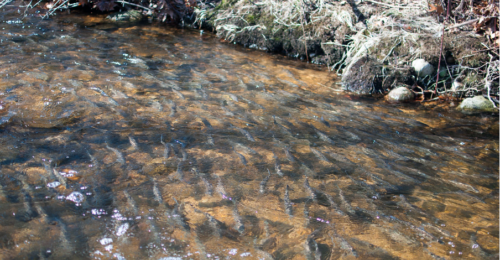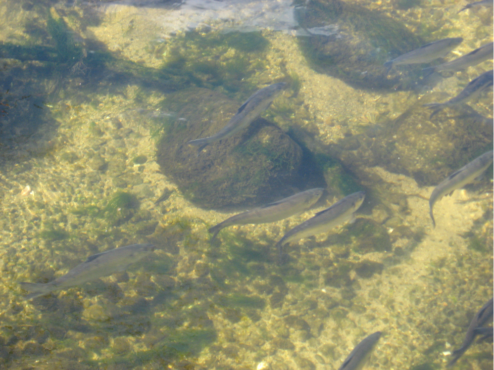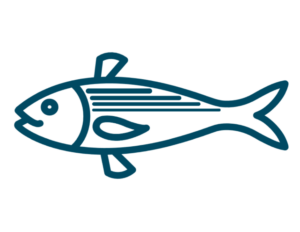Overview
Blueback herring (Alosa aestivalis) are an anadromous species that spend the majority of their adult lives at sea, only returning to freshwater to spawn. They are sleek, metallic-blue fish, under a foot in length. Important ecologically to food webs in the watershed as adults and juveniles, and for recreational fishing, these migrants historically ranged as far upstream as Bellows Falls, 179 miles from Long Island Sound. They spawn in quick, shallow currents of the main stem river and its tributaries; also utilizing coves, juveniles then feed in the Connecticut’s currents until fall, when they return to the sea.
Fish Facts
- Species type Anadromous
- Size Up to 1 foot
-
Conservation
High Concern
A species of high concern is one that has been evaluated to be at risk of extinction or elimination fie to restricted range, few populations or occurrences, recent and widespread declines, severe threats or other factors.
- Migration period April – June
- Where to see them Moulson Pond, StanChem, Rainbow, West Springfield, Holyoke, Easthampton and Turners Falls dams
River population trends
Fun fact!
Historically, river herring (the collective name for Alewife and Blueback Herring) spawned in virtually every river and tributary along the Atlantic coast.
What do they look like?
Blueback herring are silvery in color and have a series of spiny and keeled scales along their bellies. They are characterized by the deep blush-green hue of their backs. With a black spot on their shoulder behind their head, they are difficult to distinguish from the alewife.
Where and when can I see them?
Visit Blueback herring from April to June at these dams:
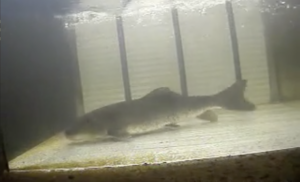
Moulson Pond
About the facility
The Moulson Pond Fishway on the Eightmile River has successfully provided passage for migrating fish and eels around the old mill dam for many years. Since 1998, when the fishway was installed, thousands of fish have been observed passing around the dam to swim upstream to their ancestral spawning grounds. Since 2015, a newly installed camera has been able to give Connecticut Department of Energy and Environmental Protection (CT DEEP) an accurate count of the fish that traveled this way. The fish ladder operation is monitored by the CT DEEP, which issues weekly fish count reports during the fish run season.
Who passes through this dam?
When do fish migrate?
Upstream
How are they moving?
At the Moulson Pond facility, fish move upstream by using the fish ladder. With stepped pools of flowing water, fish can hop up the ladder from the base of the barrier to the waters behind. To move downstream, fish at this site go over the dam spillway.
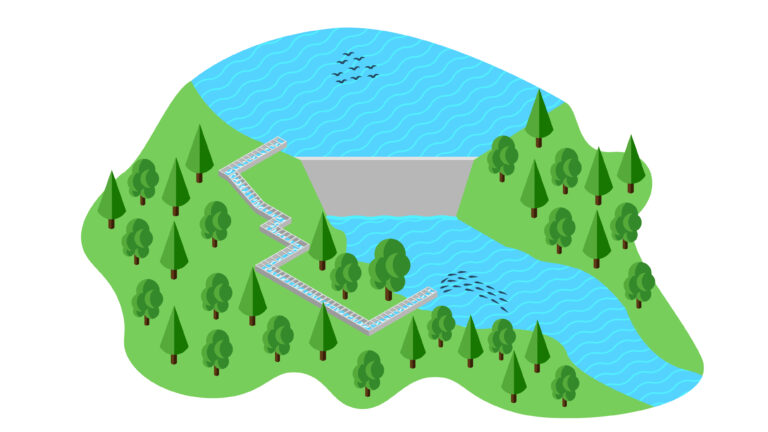
Where and when can I see them?
The Moulson Pond ladder does not have specific viewing hours. When in operation, the public can view fish using the ladder by visiting the fishway. There is no cost of admission. The fish ladder is located at the following address:
Moulson Pond
26-2 Mt Archer Rd
Lyme, CT 06371
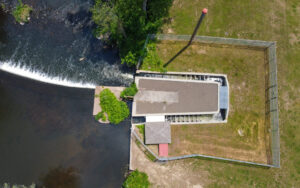
StanChem Dam
About the facility
The StanChem fish ladder was built in 2013 to allow fish to swim upstream around the dam that was built in 1900. The passageway opened the upper 15 miles of the Mattabesset River to native migratory fish populations. The fishway, built in partnership with property owner Stanchem Corp and several nature advocacy non-profits, is on Stanchem property in the East Berlin section of Berlin. The fish ladder operation is monitored by the Connecticut Department of Energy and Environmental Protection (CT DEEP), which issues weekly fish count reports during the fish run season.
Who passes through this dam?
When do fish migrate?
Upstream
Downstream
How are they moving?
At the StanChem Dam, fish move upstream by using the fish ladder. With stepped pools of flowing water, fish can hop up the ladder from the base of the barrier to the waters behind. To move downstream, fish at this site go over the dam spillway.

Where and when can I see them?
The StanChem Dam fish ladder is not open to the public. The fish ladder is located at the following address:
StanChem Dam
401 Berlin St
Berlin, CT 06023
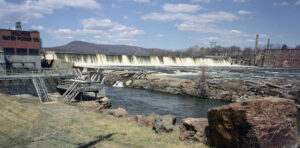
Holyoke Dam
About the facility
The Holyoke Dam is a granite dam that spans the Connecticut River between Holyoke and South Hadley and diverts water from the river into the Holyoke Canal System and Holyoke Gas & Electric’s (HG&E) Hadley Falls Facility. The dam that you see today was constructed between 1895 and 1900. The Hadley Falls Facility is located on the Holyoke side of the Holyoke Dam and contains two hydroelectric generating wheels with a total installed capacity of approximately 33 megawatts. Hadley Falls also houses a fish lift to help fish traveling upstream pass over the dam, and is open to the public for Fishway viewing and tours during the public viewing season.
Who passes through this dam?
When do fish migrate?
Upstream
Downstream
How are they moving?
At the Holyoke Dam, fish move upstream primarily using a fish elevator. With this elevator, fish swim into a collection area at the base of the dam. When enough fish enter the collection area, they are moved into a hopper that carries them toa flume that empties above the dam. At the Holyoke Dam, two elevators lift 500 fish at a time up the 52 foot dam. At this site there is also an eel ladder. The eel wrap around the pegs as they move upward. Unlike the fish ladder, the eel ladder does not span the height of the dam. The eel drop into a bucket after traversing the ladder and are deposited above the dam by fishway staff. To move downstream, fish at this site either go over the dam spillway or through a bypass around the dam.

Where and when can I see them?
The Robert Barret Fishway at the Holyoke Dam is open to the public during the migration season, but visitors must reach out via their online form to request a tour. The fish ladder is located at the following address:
Robert Barrett Fishway
1-3 County Bridge
Holyoke, MA 01040
Tel: (413) 536-9460
Email the Fishway
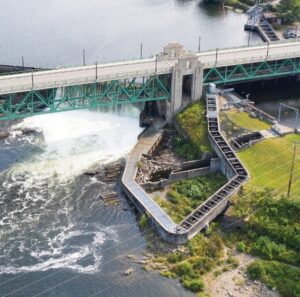
Turners Falls Dam
About the facility
The Turners Falls ladders help migrating fish get past the Turners Falls dam. These stair-like ladders consist of a series of rising pools, each pool approximately one foot higher than the last. Completed in 1980, the Turners Falls ladders are a series of three ladders located along a 2.5-mile stretch of the river. The Turners Falls ladders are located at the Cabot Hydroelectric Station, the spillway (dam) and the gatehouse.
Who passes through this dam?
When do fish migrate?
Upstream
How are they moving?
Fish enter the fishladder at Cabot station, or continue upstream to a second ladder at the dam. If they enter here, they travel upslope using a series of stepped pools to reach the power canal, where they can continue swimming upstream. To move downstream, fish move over the spillway when there is water or out through the power canal.

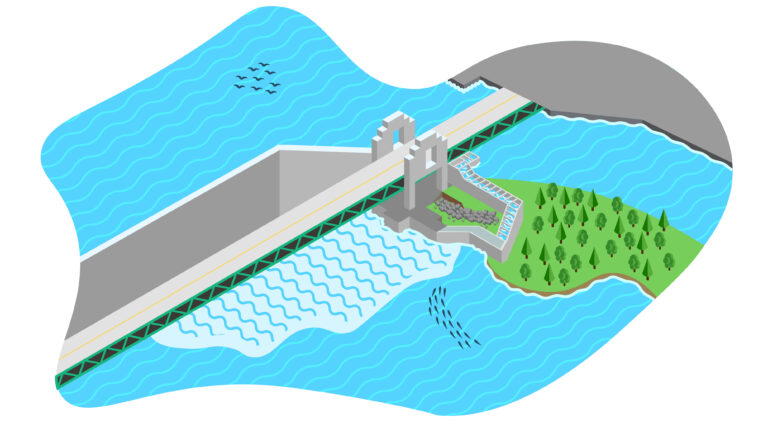
Where and when can I see them?
The Turners Falls Fishway lets visitors see what fish look like underwater as they swim upstream. The fish ladder is open for public viewing during the height of spawning season from mid-May to mid-June. Admission is free.
(behind the Montague Town Hall)
1 Avenue A
Turners Falls, MA 01376

Rainbow Dam
About the facility
Dams along the Farmington River have been using the rivers power to generate electricity since the early 1800s. The current fish ladder at the Rainbow Dam, which consists of a series of 59 interconnected pools, was constructed in 1976 to make it possible for anadromous fish to return upriver to spawn. A new fish passageway for Rainbow is currently in the design stage.
In 2023, CT DEEP did not operate the Rainbow Fish Ladder due its documented poor performance and the lack of suitable downstream fish passage protection measures at the Stanley Works owned dam/project. Fish passage at this project has been the responsibility of the CTDEEP, due to FERC legal rulings and timing of that facilities construction.
Who passes through this dam?
When do fish migrate?
Upstream
Downstream
How are they moving?
At the Rainbow Dam, fish move upstream using several methods. Many pass upstream by using the fish ladder. With stepped pools of flowing water, fish can hop up the ladder from the base of the barrier to the waters behind. At this site there is also an eel ladder. The eel wrap around the pegs as they move upward. Unlike the fish ladder, the eel ladder does not span the height of the dam. The eel drop into a bucket after traversing the ladder and are deposited above the dam by fishway staff. To move downstream, fish at this site either go over the dam spillway or through a bypass around the dam.

Where and when can I see them?
The fish ladder at Rainbow Dam is open to the public during the migration season on open house days. The outdoor portion of the ladder is open year-round, but the indoor viewing station is only open during open houses. The fish ladder is located at the following address:
Rainbow Dam
Windsor, CT 06095
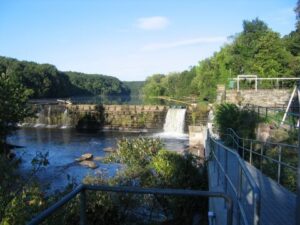
West Springfield Dam
About the facility
Prior to the construction of the fishway in 1951, the West Springfield dam (formerly known as DSI dam) was the first barrier on the Westfield River that migratory fish would face and couldn’t pass. The fishway was built as a result of the Federal Energy Regulatory Commission (FERC) relicensing process and first opened in 1996. In 2001, an eelway was constructed at the fishway, allowing the American eel to migrate upstream of the dam as well. Passage of fish at the West Springfield Dam opened approximately 20 additional miles of habitat in the mainstem Westfield and much more in the tributaries. The MA Division of Fisheries and Wildlife is responsible for monitoring the fishway.
Who passes through this dam?
When do fish migrate?
Upstream
Downstream
How are they moving?
At the West Springfield Dam, fish move upstream using several methods. Many pass upstream by using the fish ladder. With stepped pools of flowing water, fish can hop up the ladder from the base of the barrier to the waters behind. At this site there is also an eel ladder. The eel wrap around the pegs as they move upward. Unlike the fish ladder, the eel ladder does not span the height of the dam. The eel drop into a bucket after traversing the ladder and are deposited above the dam by fishway staff. To move downstream, fish at this site go over the dam spillway.
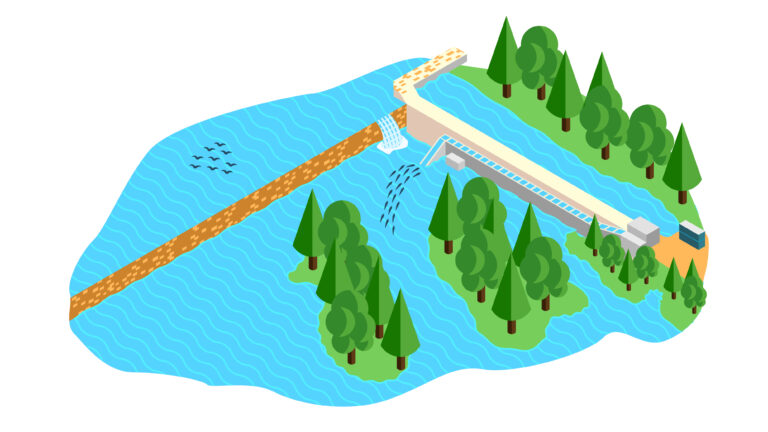
Where and when can I see them?
The fish ladder at the West Springfield Dam (formerly known as DSI dam) is not open to the public during the migration season apart from a once-a-year open house. The fish ladder is located at the following address:
Westfield River Reservoir
Agawam, MA 01030
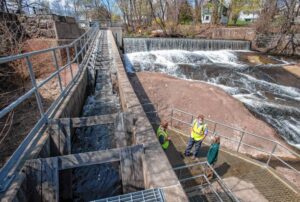
Easthampton Dam
About the facility
Built in 2014, the fish ladder in Easthampton has performed well in attracting migratory species that had been absent from the Manhan River after dams reduced their ranges. The fish ladder operation is monitored by US Fish and Wildlife, which issues weekly fish count reports during the fish run season.
Who passes through this dam?
When do fish migrate?
Upstream
Downstream
How are they moving?
At the Easthampton Dam, fish move upstream by using the fish ladder. With stepped pools of flowing water, fish can hop up the ladder from the base of the barrier to the waters behind. To move downstream, fish at this site go over the dam spillway.

Where and when can I see them?
Public access to the fish ladder remains limited on a drop-in basis, though according to the city, the facility is readily accessible upon request. The fish ladder is located at the following address:
Easthampton Dam
39 Northampton St
Easthampton, MA 01027
